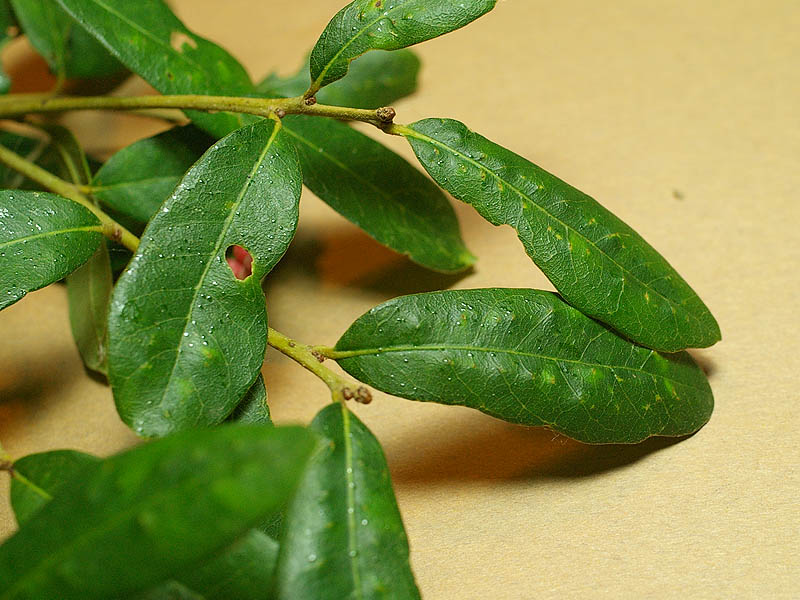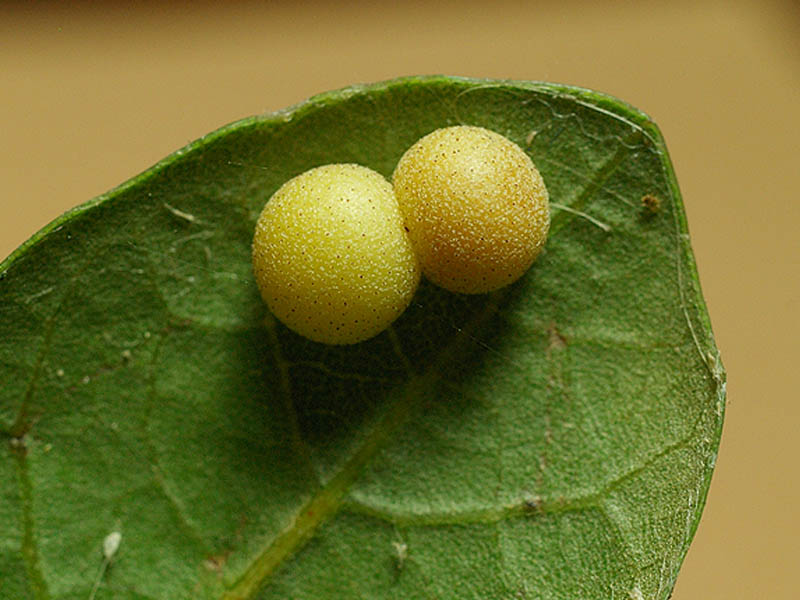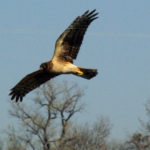These galls were found on a Live Oak tree in Carrollton, Texas. These particular galls were created by the egg laying activities of a Red Pea Gall Wasp (Cynips divisa). The appearance of the galls clearly explains the name of the culprit insect.
The galls are actually created from the host plant’s living tissue, and are caused by hormonal action directed by an embedded wasp egg. Fortunately, the galls are considered harmless to the host oak tree. Here is how the situation is described by Ron Smith, NDSU Extension Horticulturist and Turfgrass Specialist:
These galls are mostly initiated at the leaf bud unfolding stage when a very small wasp “stings” the developing leaf and deposits an egg or two within the opening. The hormonal action from the developing larvae causes plant cell proliferation which both provides both protection and nourishment of the developing insect/mite.
Control is not necessary nor recommended, as any application of insecticides after the galls are noted would be the equivalent of closing the barn door after the cows got out; and spraying early in the spring would be a timing challenge. Generally where a heavy gall infestation is noted, predators find them and do the job of keeping them under control.
Other than cosmetic appearances these galls cause no harm to the trees that would be serious. Consider them a biological curiosity!”








Observation Details
| County | – | Denton |
|
| City | – | Carrollton | |
| Date | – | August 26, 2012 | |
| Time of Day | – | Afternoon | |
| Temperature | – | Warm (70-89°F/21-32°C) | |
| Weather | – | Clear | |
| Habitat | – | Residential – Single Family | |
| Type of Behavior | – | Reproducing | |
| Gender | – | Mixed | |
| Maturity | – | Egg | |
| Observer | – | Chris Jackson | |
| Main Article | – | Red Peas Gall Wasp | Observation Location |







One Reply to “Red Pea Gall Wasp – Infected”